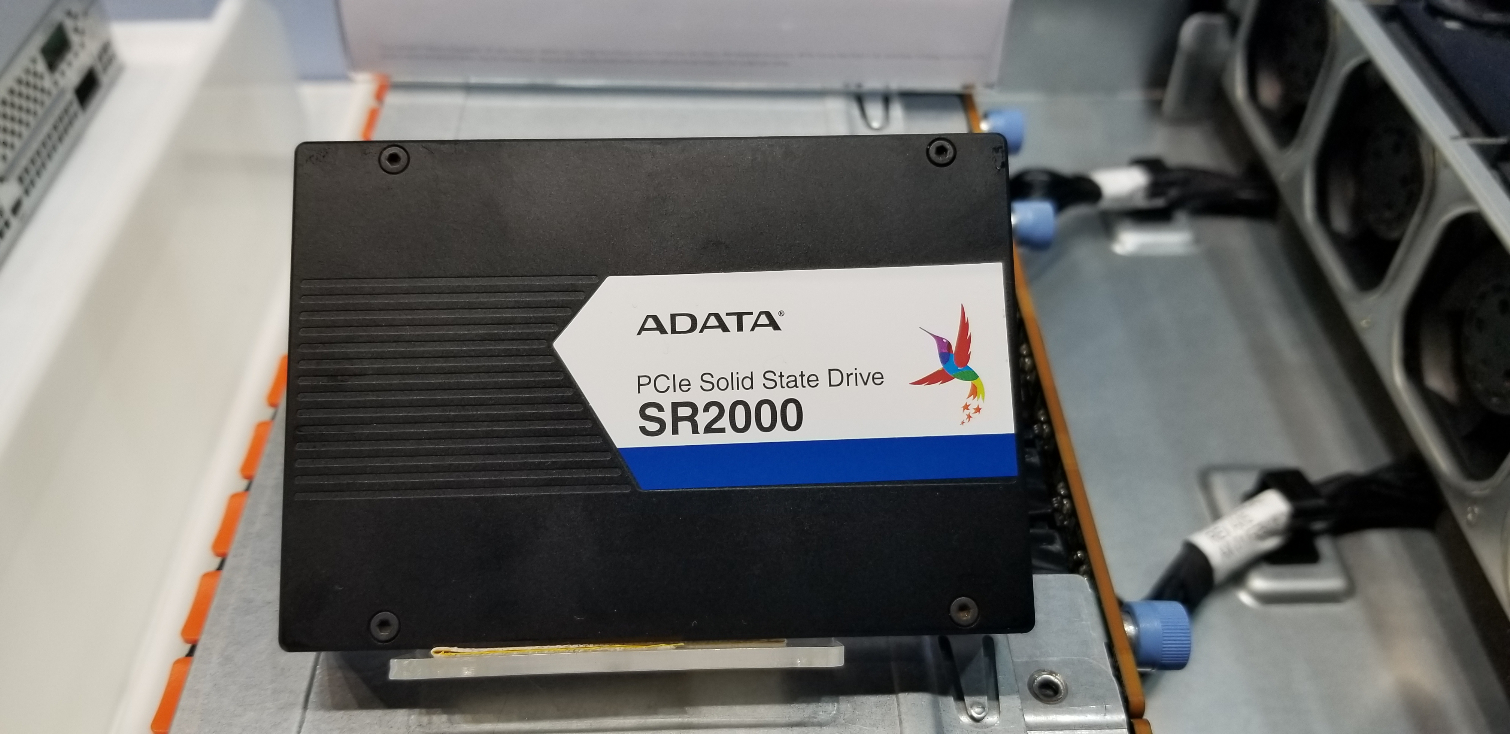Working PCIe 4.0 Spotted In The Wild As 5.0 Approaches
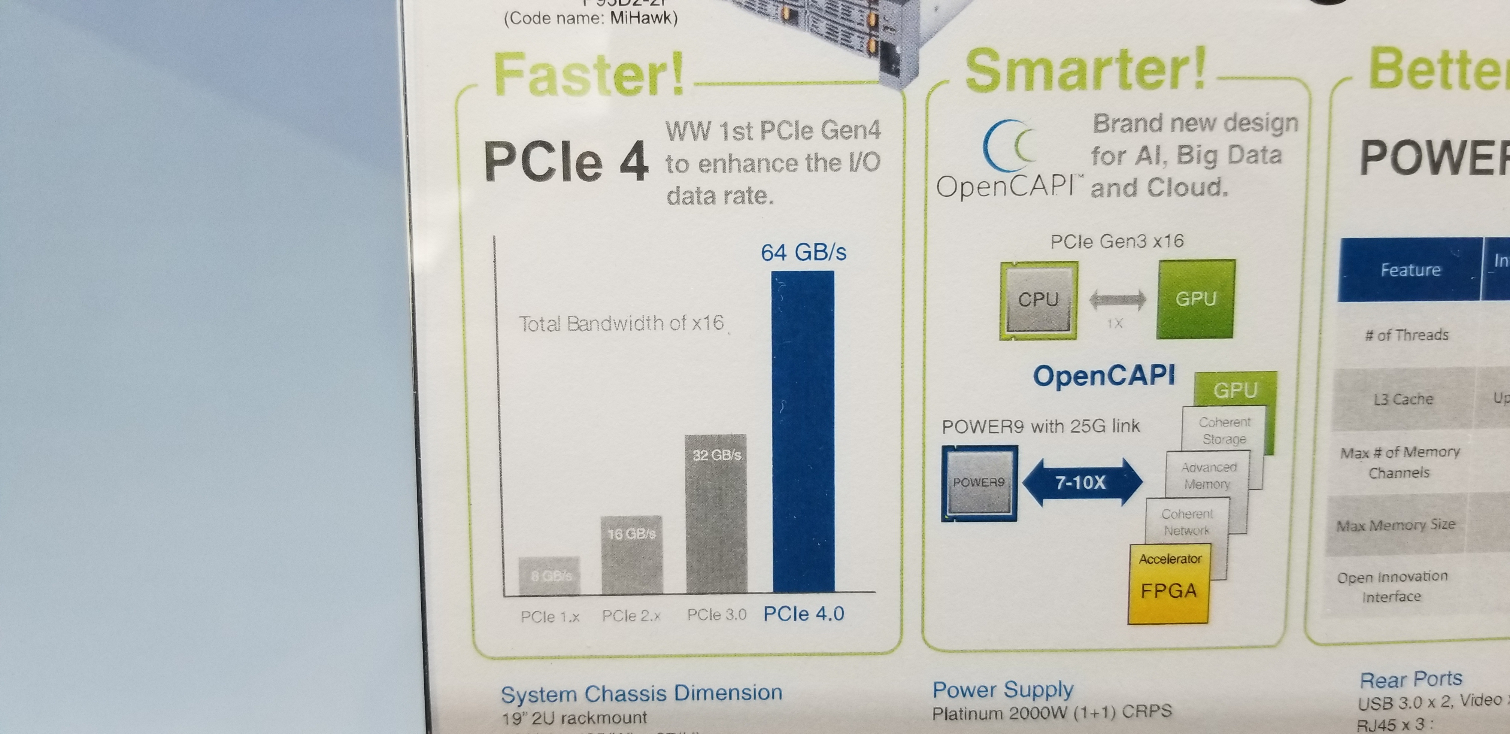
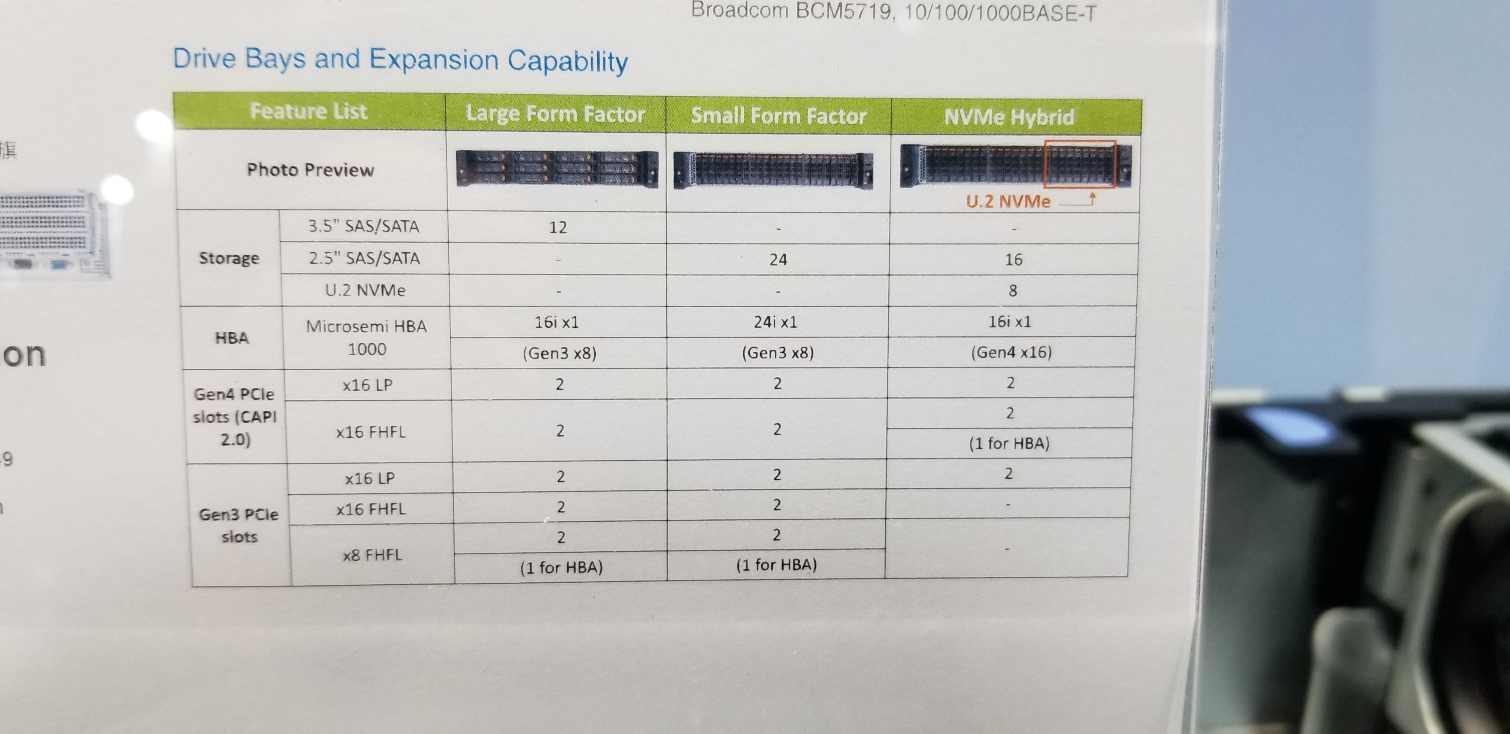
PC users will have to wait a little longer for PCI Express 4.0 but IBM has the technology ready to ship. We spotted a Wistron P93D2-2P server code named MiHawk at the Adata booth. The server features PCIe 4.0 with up to 64GB/s to the storage backplane from a Microsemi HBA. 16 SATA/SAS and 8 U.2 NVMe SSD ports divide the bandwidth, a 2x increase from a single PCIe 3.0 x16 HBA.
Wistron calls the MiHawk the "1st PCIe Gen 4 to enhance the I/O Data Rate". The IBM Power9 (LaGrange) processor features 4 threads per core and a massive 120MB L3 cache. The technology uses up to 8 memory channels and supports up to 4TB of system memory. Sadly, it will not play Crysis. The IBM POWER9 server runs on Linux, Ubuntu, CentOS, or SLES. Windows users will just have to wait for AMD or Intel to bring us the high-bandwidth next generation interconnect sometime in 2019.
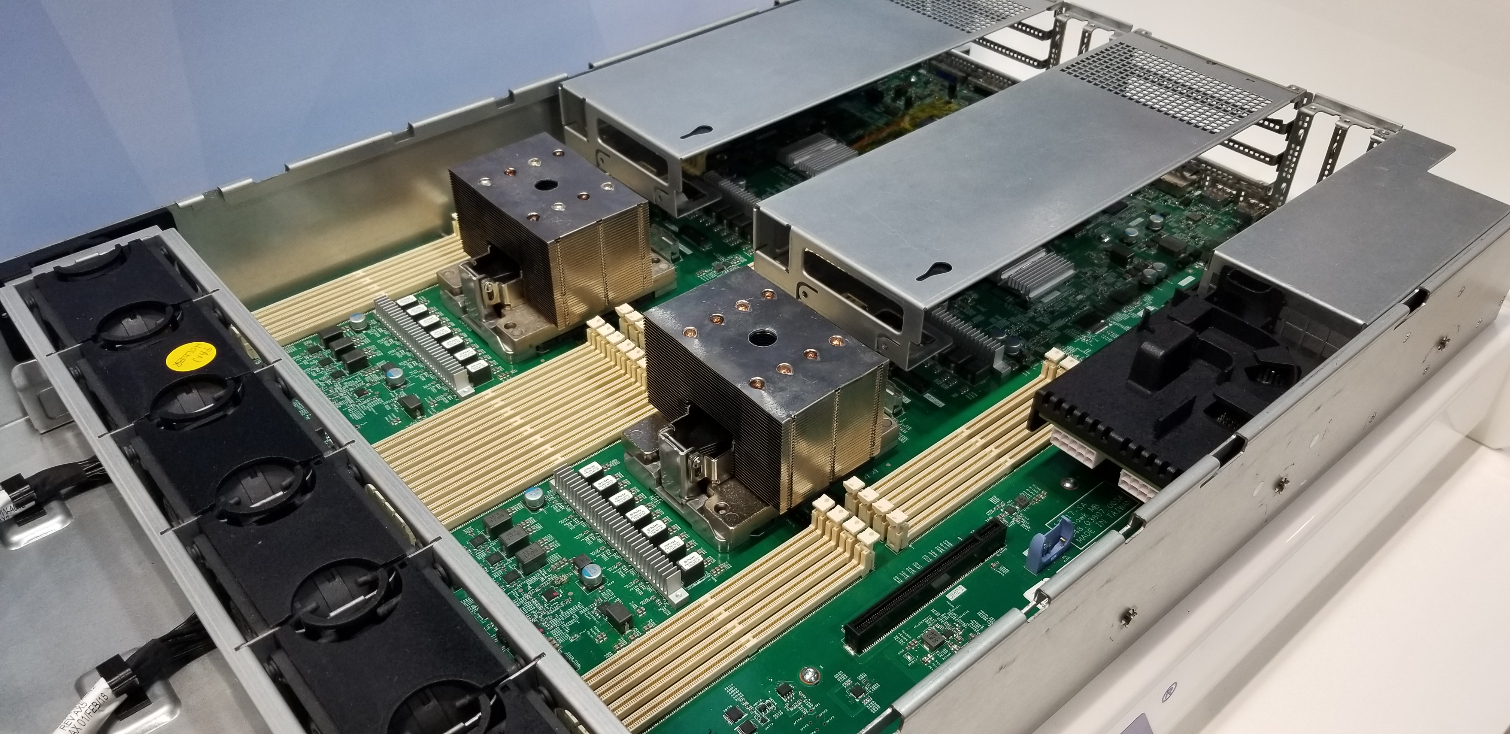
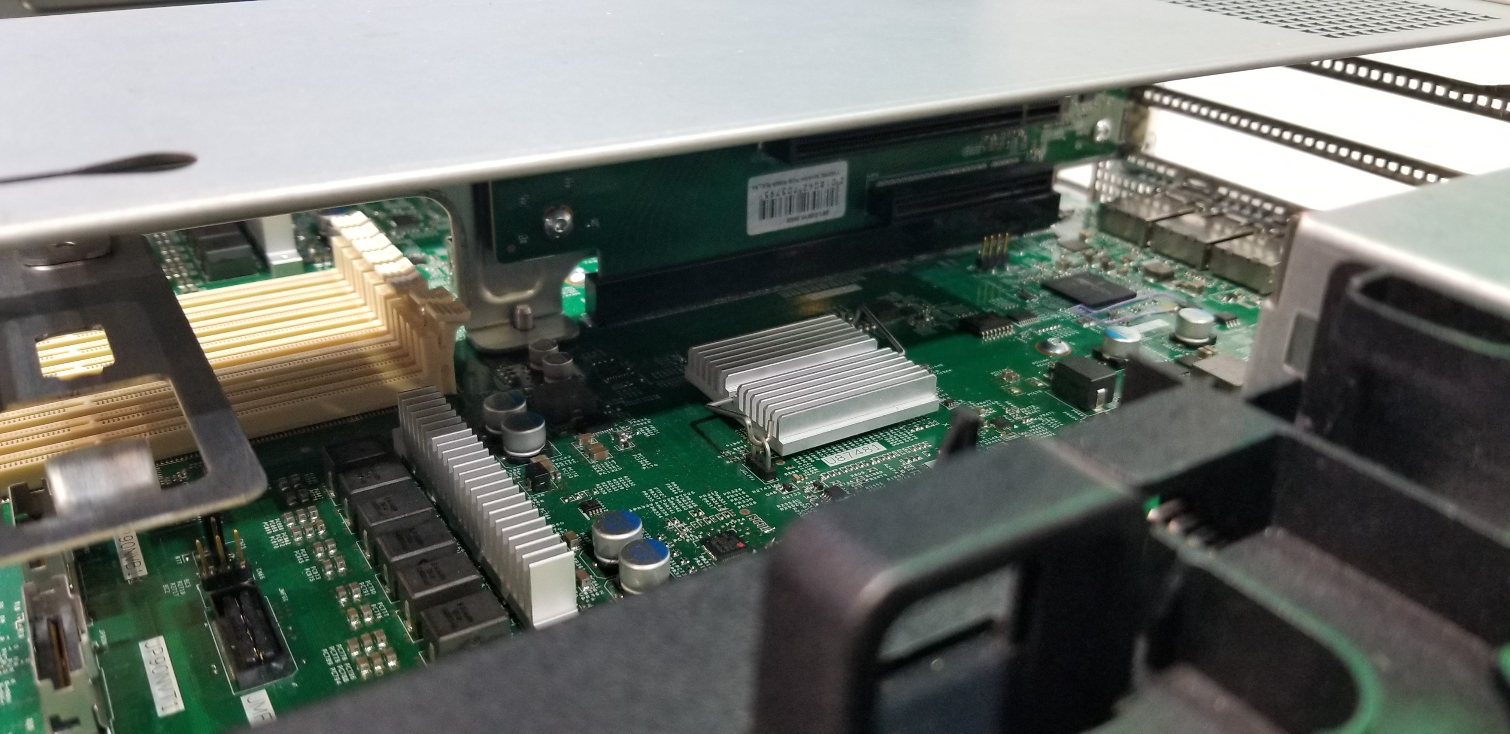
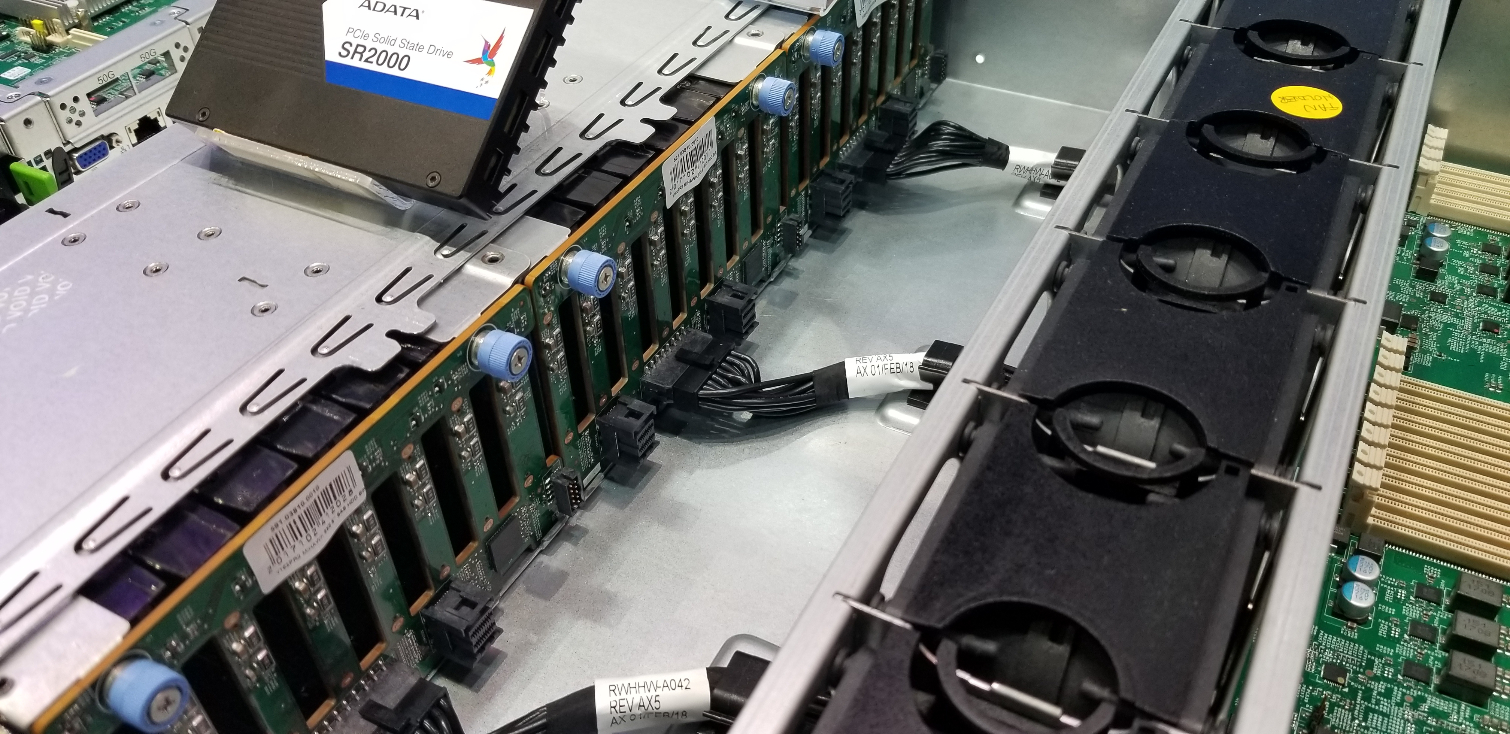
The server on display didn't have any components inside; it's a barebones display that didn't even have the PCIe 4.0 Microsemi HBA cards installed. The big take away is that PCIe 4.0 was finalized in October 2017 and some companies have designs ready to ship.
While at Computex we learned from PCI-SIG that PCIe 5.0 has moved to 0.7. The 0.7 revision is just one step away from the final release slated for 2019. PCI-SIG has said in the past that PCIe 4.0 will be short lived due to the quick turn around for 5.0 that again doubles bandwidth. It's possible for PC makers to ignore 4.0 and focus resources on implementing 32GT/s per lane in products coming to market in 2020.
The server was used as the backdrop for the new Adata SR2000 enterprise SSD. The SR2000 ships in two form factors, the 2.5" U.2 shown here and the superior add-in card form factor. Both use enterprise-grade 3D TLC memory but the add-in card scales up to 11TB, 6GB/s performance, and up to 1 million IOPS The U.2 model also scales to 11TB but sequential performance drops to "just" 3,500 MB/s and 830,000 IOPS random performance.
Get Tom's Hardware's best news and in-depth reviews, straight to your inbox.

Chris Ramseyer was a senior contributing editor for Tom's Hardware. He tested and reviewed consumer storage.
-
TechyInAZ Geez 5.0 is coming next year?? Yeah I don't blame manufacturers -- of consumer grade motherboards at least -- to skip 4.0 when 3.0 for now is working fine for consumers.Reply -
Lucky_SLS But 5.0 will be good for us, Intel being all stingy with the pcie lanes in coffelake SReply -
hannibal Intel is suposed to use 4.0 but if Nvidia and amd will pass 4.0 and move to 5.0 with their products... well 4.0 is only usefull in pci based storages...Reply -
alextheblue I can't look at PCIe standards without wishing the M.2 standard had zero provisions for SATA and support for as many as 6-8 lanes. Especially for high performance laptops that don't have the luxury of full size PCIe ports.Reply
But at least PCIe 5.0 will buy us a lot of breathing room. -
bit_user These guys have had POWER9 workstations and servers w/ PCIe 4.0, for a while:Reply
https://raptorcs.com
They recently introduced a low-cost version, with only a single socket. -
bit_user Reply
I don't understand why so many people think 4.0 is going to be skipped over... It's here, it's a significant improvement, and it's forward & backward compatible. There's literally no reason not to adopt it.21050869 said:Intel is suposed to use 4.0 but if Nvidia and amd will pass 4.0 and move to 5.0 with their products... well 4.0 is only usefull in pci based storages...
What I think will happen is that 4.0 will get adopted pretty quickly. Initially, 5.0 will appear mostly in servers, taking a little while to trickle down to the mainstream. Sort of like 10 Gigabit Ethernet (except I hope not nearly so long).
Anyway, AMD is said to use 4.0 in their 7 nm EPYC, which makes sense given that the Infinity Fabric is PCIe-based. So, adopting 4.0 should significantly improve inter-processor communication, as well as with peripherals. -
justinjkiss1 Reply21050633 said:But 5.0 will be good for us, Intel being all stingy with the pcie lanes in coffelake S
5.0 wont look so good when Intel cuts the number of lanes down further saying less are needed now that each lane is faster. -
bit_user Reply
True. But they won't cut it too much, since it'll hurt their own dGPU business, as well.21053419 said:21050633 said:But 5.0 will be good for us, Intel being all stingy with the pcie lanes in coffelake S
5.0 wont look so good when Intel cuts the number of lanes down further saying less are needed now that each lane is faster.
The other thing is that they can't afford for AMD to offer too much better, so that will also keep them from cutting down their mainsteam desktop to just x4 lanes. I think we'll probably get x8 + DMI5 (x2 or x4). For storage, their line is going to be that we should use Optane DIMMs or go through chipset. But you know they'll be pushing Optane. -
alextheblue Reply
I'm pretty sure they only use PCIe links for IFIS multi-socket communication, and even then I can't remember if they actually use PCIe protocol. I don't think PCIe matters at all for the purposes of IF... CAKE runs at memclock and IFIS/IFOP are synced to CAKE.21052495 said:Infinity Fabric is PCIe-based. So, adopting 4.0 should significantly improve inter-processor communication, as well as with peripherals.
